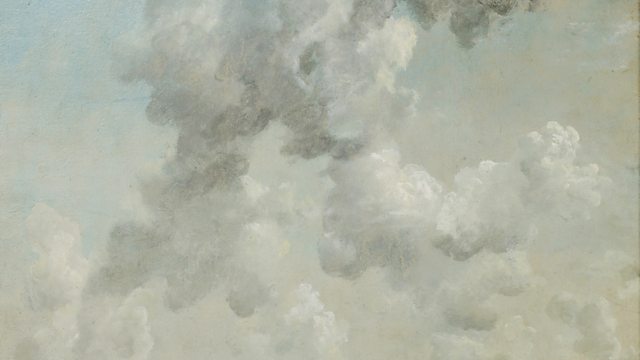Observing the Air
Sir Ian Blatchford and Dr Tilly Blyth on challenges by Romantic artists and naturalists to grapple with cloud patterns, from Constable's fine art to a new science of meteorology
Sir Ian Blatchford and Dr Tilly Blyth continue their series exploring how art and science have inspired each other, from the Enlightenment to Dark Matter.
They focus on the long tradition by artists and naturalists to capture and define the untamed patterns of clouds in all their short lived states.
Ian and Tilly visit Paddington's Crossrail Station where they look up at clouds most recently interpreted in Spencer Finch’s A Cloud Index (2019), which depicts different types of clouds on a vast glass canopy. It pays homage to the work of the Romantic landscape painters and their time when imaginative and rational inquiry were becoming allies.
Ian reveals that John Constable was one of the first to paint these ethereal assemblages of water vapour with a remarkable understanding of cloud movement and structure as a result of his intense "skying" sessions during the 1820s on Hampstead Heath. Constable believed art could shed certainty on science - and he coincidentally added weight to the new science of meteorology and the work of amateur weather watcher Luke Howard, whose new classification scheme is depicted in sketches and watercolours on loan from the Royal Meteorological Society.
As Tilly Blyth illustrates, Howard's sketches and classifications cleverly captured a sense of endless mutating forms which, despite restricting the imaginative shaping by the influential Romantic intellects, meant an infinite variety of cloud forms could now be grasped by anyone. For Constable, elusive cloud shapes could be captured without any conscious shape-making taking place.
Producer Adrian Washbourne
Produced in partnership with the Science Museum Group
Photograph by Ashmolean Museum/Heritage Images/Getty Images
Last on
More episodes
Previous
Next
Broadcasts
- Thu 26 Sep 2019 13:45Βι¶ΉΤΌΕΔ Radio 4
- Thu 3 Jun 2021 19:45Βι¶ΉΤΌΕΔ Radio 4


